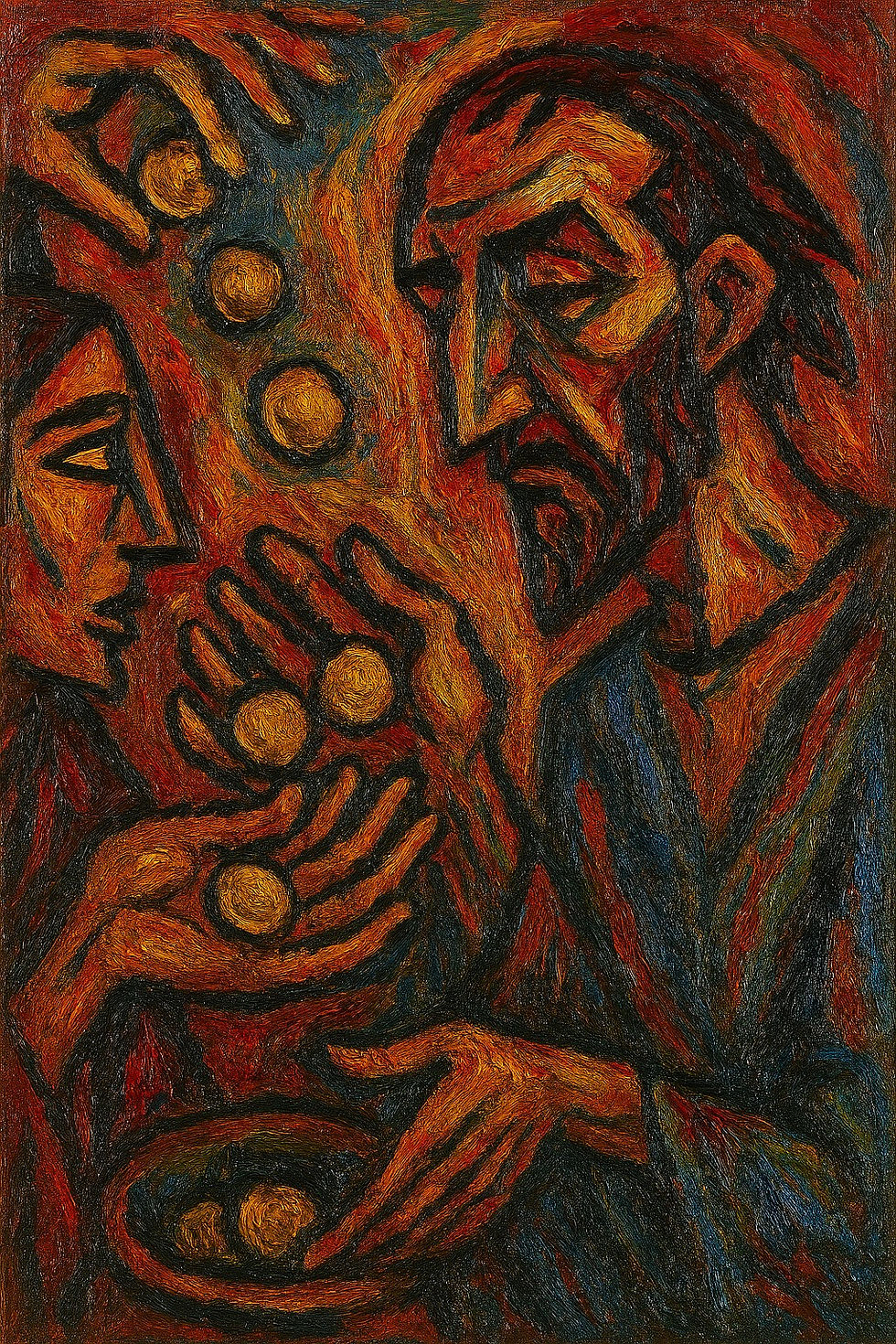neuron cell synapsis network - rise of consciousness
- Martin Döhring

- 8. Okt.
- 3 Min. Lesezeit
...consciousness arises from the physical matter of the brain, specifically from neurons and their networks of synapses. Let’s unpack this carefully, step by step.

🧠 1. The Biological Foundation: Neurons and Synapses
Neurons are specialized cells that process and transmit information via electrical and chemical signals.
Each neuron connects to thousands of others through synapses, forming an immense network — roughly 86 billion neurons and 100 trillion synapses in the human brain.
Synapses can strengthen or weaken over time depending on activity — a process known as synaptic plasticity. This is the foundation for learning and memory.
Essentially, the brain is a massively parallel, dynamic, self-reconfiguring network.
⚡ 2. From Neural Activity to Representation
At any given moment, patterns of neural firing encode sensory inputs, motor commands, and abstract thoughts. These firing patterns:
Represent external stimuli (like vision, sound, touch).
Represent internal states (memories, emotions, predictions).
Are hierarchically organized — from low-level sensory maps to high-level abstractions (concepts, language, self).
So, the mind isn’t located in a single spot — it’s a distributed pattern across neural populations.
🌐 3. The Network Dynamics and Emergent Properties
The key idea in neuroscience and complexity theory is emergence:
Consciousness is not stored in any single neuron; it emerges from the coordinated activity of billions of neurons interacting dynamically.
This is analogous to how:
An ant colony’s “behavior” emerges from simple ant interactions.
A weather system’s pattern emerges from local air movements.
In the brain, neuronal synchrony and reentrant loops (feedback between brain regions) create integrated yet differentiated activity — a hallmark of conscious processing.
🧩 4. Theoretical Frameworks of Consciousness
Several major scientific theories try to explain how this emergence leads to subjective experience:
🌀 Integrated Information Theory (IIT) — Tononi
Consciousness corresponds to the amount of integrated information in a system (denoted Φ, “phi”).
A system is conscious to the extent that it has rich cause-effect structures that cannot be reduced to independent parts.
🧭 Global Workspace Theory (GWT) — Baars, Dehaene
The brain is like a theater: many unconscious processes compete for attention, but only the “winning” information enters a global workspace accessible to multiple systems (memory, language, planning).
Consciousness arises when information becomes globally available.
🧬 Predictive Processing / Bayesian Brain
The brain continuously generates predictions about the world and updates them based on sensory feedback.
Conscious experience may reflect the brain’s best inference about the causes of its sensory inputs — a constant negotiation between prediction and surprise.
🌱 5. The Gradual Rise of Consciousness (Evolutionary Perspective)
Consciousness likely didn’t appear suddenly but evolved gradually:
Simple neural nets — basic reflexes and sensory responses (worms, jellyfish).
Sensory integration — internal representations and primitive awareness (fish, reptiles).
Self-models and planning — higher-order consciousness, metacognition (mammals, humans).
So what we call “mind” is a layered system — built evolutionarily and developmentally — on top of neural computation.
🪞 6. Consciousness as Self-Modeling
Human consciousness includes a self-model — a representation of “me” inside the neural network.
This self-model integrates body perception, memory, goals, and social awareness.
It allows for introspection and meta-awareness (“I know that I am aware”).
Thus, the “I” you experience is a neural simulation created by your brain for coordination, prediction, and survival.
💡 Summary
Consciousness is an emergent, dynamic, integrative process arising from the brain’s network of neurons and synapses.The mind is what the brain does — it’s the activity pattern that makes the matter aware of itself.








Consciousness and the mind emerge from the dynamic interplay of billions of neurons connected through trillions of synapses—a biological network so intricate it rivals any known system in complexity. Here's a structured breakdown of how this neural architecture gives rise to conscious experience:
1. Neurons as Computational Units
Each neuron receives, integrates, and transmits electrical signals.
Dendrites collect inputs; the soma processes them; the axon sends outputs.
Neurons are not just passive relays—they perform nonlinear computations.
2. Synapses: The Communication Bridges
Synapses are junctions where neurons exchange information via neurotransmitters.
Excitatory synapses (e.g., glutamate) promote firing; inhibitory ones (e.g., GABA) suppress it.
Synaptic plasticity (e.g., long-term potentiation) underlies learning and memory.
3. Emergent Properties from Network Dynamics
Consciousness isn’t localized—it…